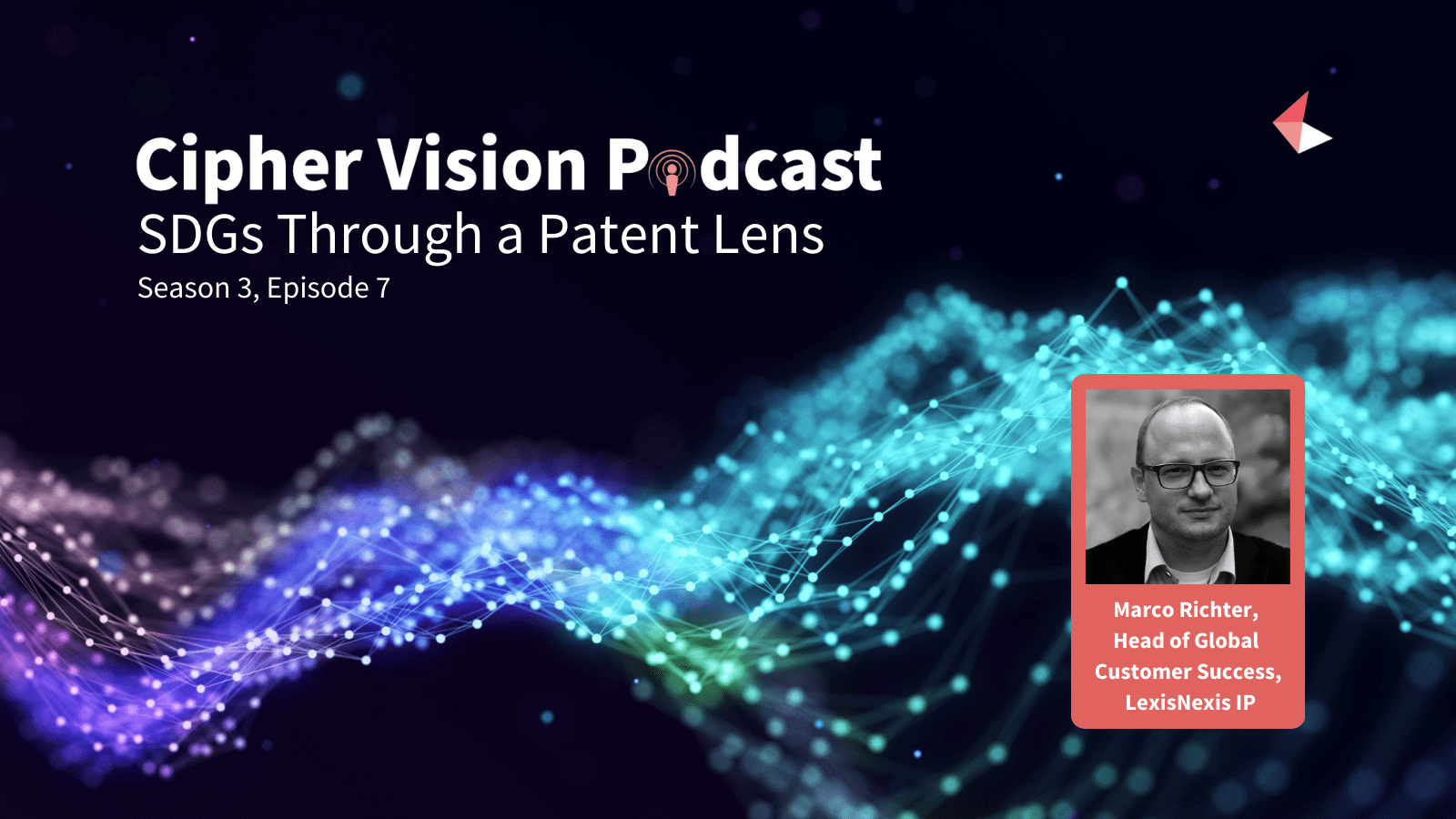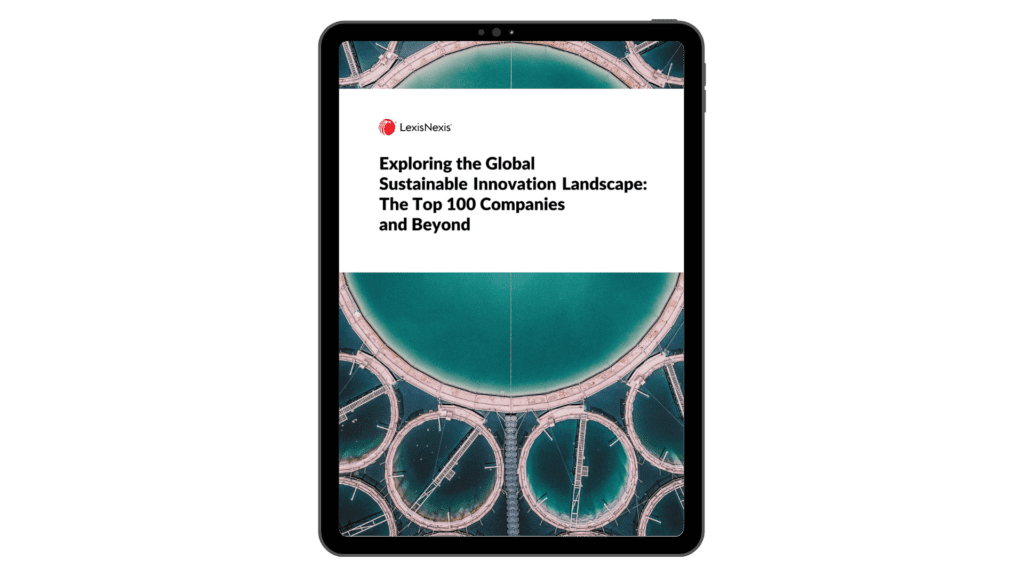SDGs Through a Patent Lens

Introduction
Episode 7 in Season 3 of the Cipher Vision Podcast series features Marco Richter, Global Head of Customer Success at LexisNexis Intellectual Property.
Marco highlights the critical role of patents in helping industry become more sustainable, discussing the benefit of measuring innovation through the prism of the United Nations Sustainable Development Goals (SDGs).
He chats to the hosts of the Cipher Vision podcast, who are:
- Francesca Levoir, Head of Marketing, LexisNexis Cipher
- Nigel Swycher, CEO, LexisNexis Cipher
Podcast Highlights
The link between SDGs and patents
Companies, governments and researchers worldwide have come together to define a path to global sustainability. This is reflected in the seventeen goals which the U.N. has outlined.
They have not only defined goals, like ‘let’s make this a planet worth living on’. No, there’s a clear path to that goal.
At LexisNexis, we extracted the technologies that brought us closer to these goals. And we translated these into the language of patents. Now, we make them available to whoever is interested – all with the click of a button.
How critical is innovation to the UN SDGs?
In the first year of COVID, greenhouse gas emissions went down, but only by 6.4%.
If I think about a world in which we have to achieve a reduction by 50% by 2030, and to achieve net zero by 2050, to expect humans to simply change behaviour and achieve these goals, is not going to get us there, not by the far short.
So I believe that technology is absolutely mission critical in helping us to achieve these very ambitious goals.
On consumers demanding change
Companies cannot ignore sustainability. If they want to have markets to sell to in two to three, five hundred years to come. They need to change behaviour now, because that’s what the consumers on all levels, B2B or B2C is demanding.
As we compare the patents that we have mapped against the United Nations SDGs with the ones that are not directly linked and associated, we see the Value Indicator that we’re calculating, based on forward citations and market coverage, is 50% higher for SDG-related patents than for unrelated patents.
And that is typically an indicator of increased interest, other innovators in this area and ultimately, an increased market demand.
The importance of measurable data
We need clear data, evidence and transparency on where we are with regards to the goals, in order to be able to see where we’re going next and whether we are on the right track to get there.
I absolutely see us in that position of delivering very crucial data points around technology and innovation.
Who Are the Global Leaders in Sustainable Innovation?
In a first-of-its-kind report, learn which companies are the world’s leading patent owners with the potential to drive transformative innovation toward the United Nations Sustainable Development Goals (SDGs)




